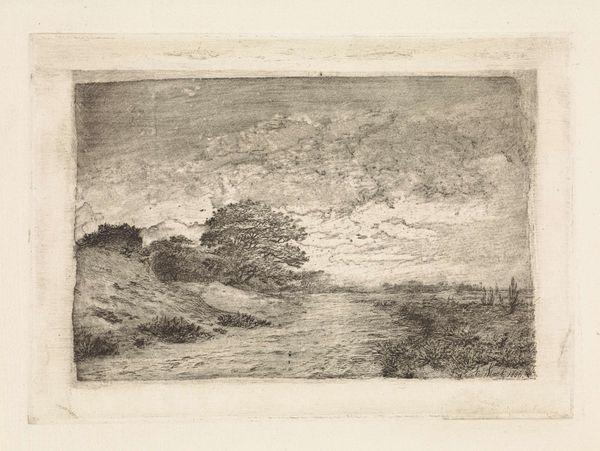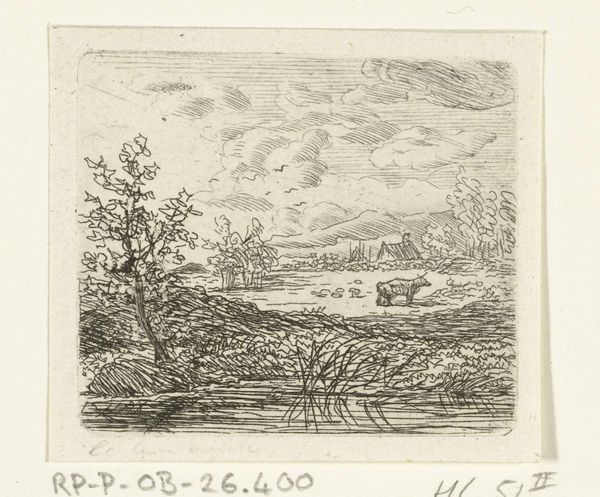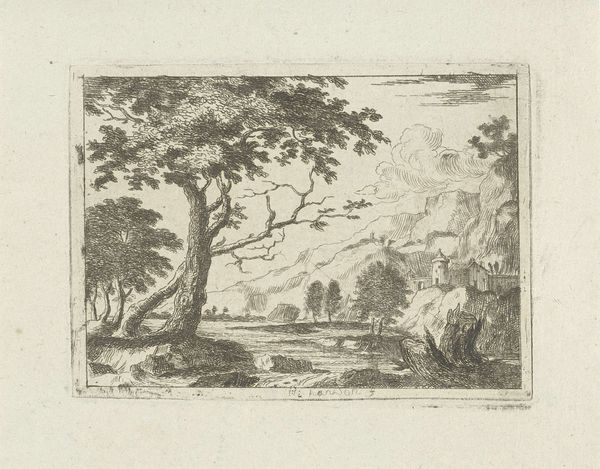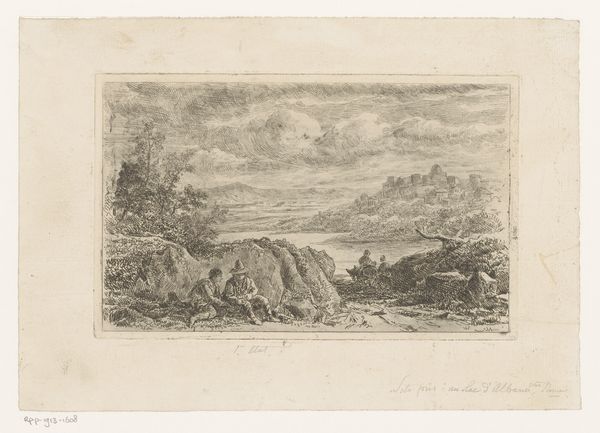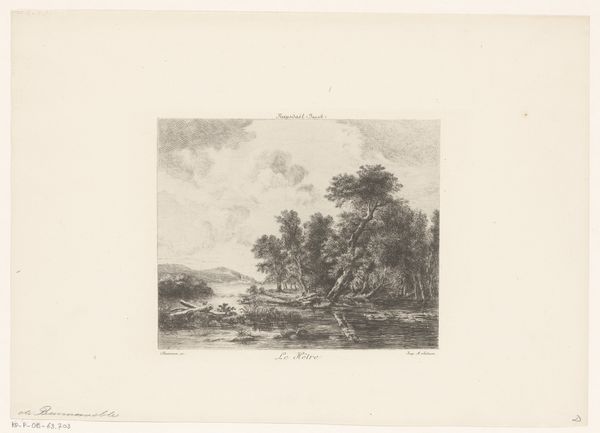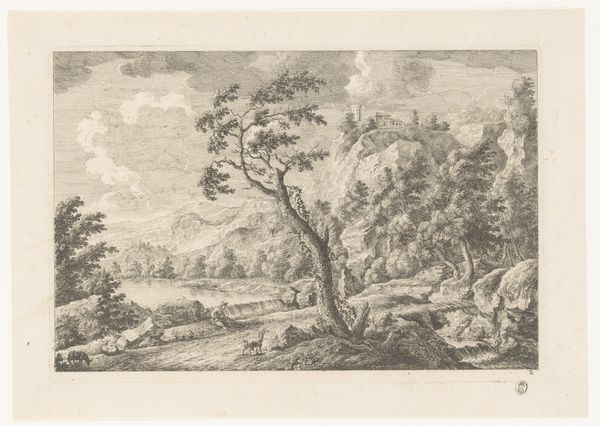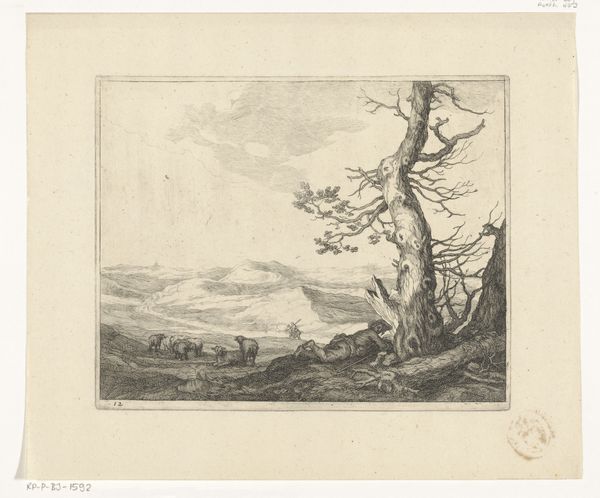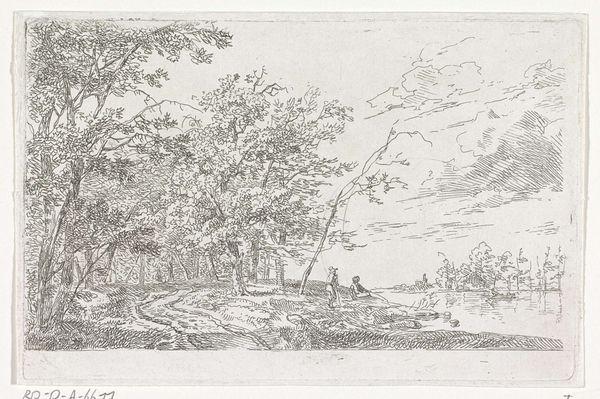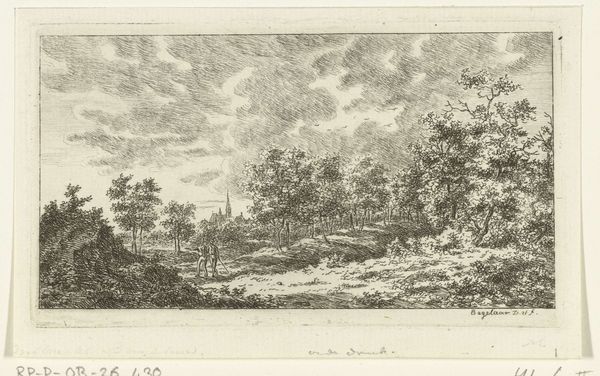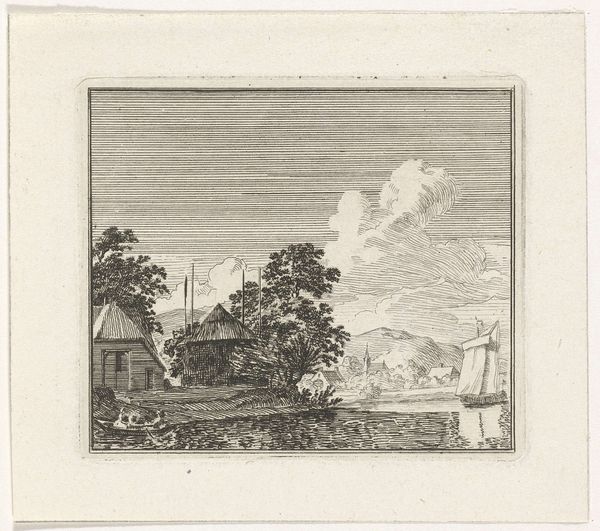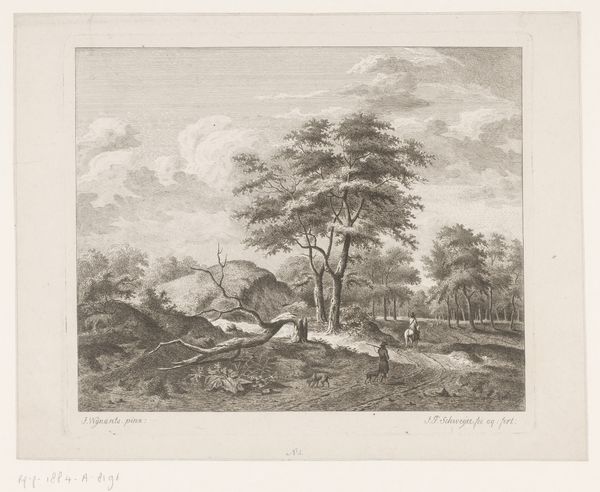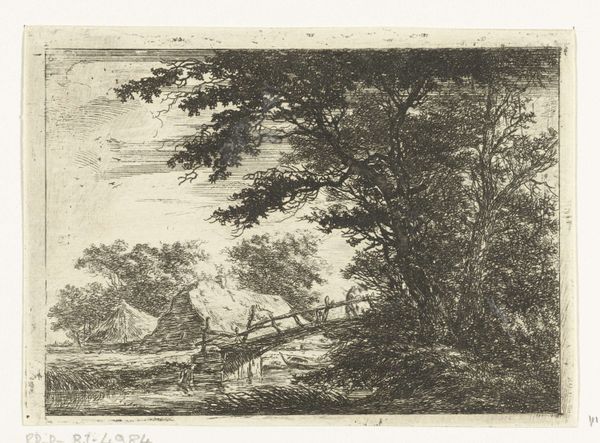
print, etching
# print
#
etching
#
landscape
#
etching
#
romanticism
#
line
#
cityscape
Dimensions: height 100 mm, width 124 mm
Copyright: Rijks Museum: Open Domain
Editor: Here we have "River View with Storm Clouds," an etching by Ernst Willem Jan Bagelaar, created sometime between 1798 and 1837. The overwhelming feeling I get is one of tension—the sky feels heavy, and even the trees are bending to some unseen force. What stands out to you about this piece? Curator: The most compelling aspect is Bagelaar’s manipulation of the etching process to evoke that tension. Look closely at the lines: notice how their density and direction mimic the storm's energy. The very labor involved in creating the plate mirrors the effort to survive this landscape. Editor: So, the artist’s process becomes part of the story? Curator: Precisely. Etching wasn't a spontaneous act; it required preparation, acid, metal, deliberate action. The materials themselves - the copper plate, the acid used for biting - each played an integral role in defining the print’s aesthetic. Consider, too, the socio-economic implications of printmaking – how did the relative affordability of prints influence the art market and public access to art during that time? Editor: That's something I hadn't considered - the means of production shaping access and influence. So it's not just a landscape; it's also a record of labour and accessibility. How would prints like these be consumed? Curator: These images became part of a burgeoning print culture that served various functions from scientific illustration to disseminating political ideas or artistic styles. The act of collecting, displaying and discussing prints encouraged connoisseurship amongst a broader audience. So we have an interplay of artistic skill, market forces, and consumer desire influencing what we see here. Editor: I’m seeing how deeply interwoven process and social context truly are, offering entirely different lenses through which we can examine the work. I appreciate you shedding some light on that! Curator: And I you. This type of artwork underscores how materiality is inherently linked to production and accessibility in our interpretation.
Comments
No comments
Be the first to comment and join the conversation on the ultimate creative platform.
